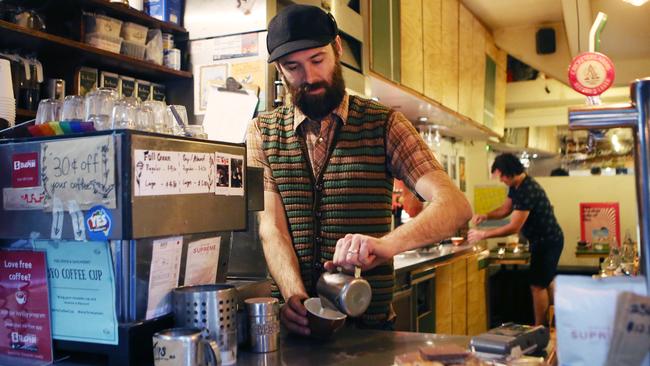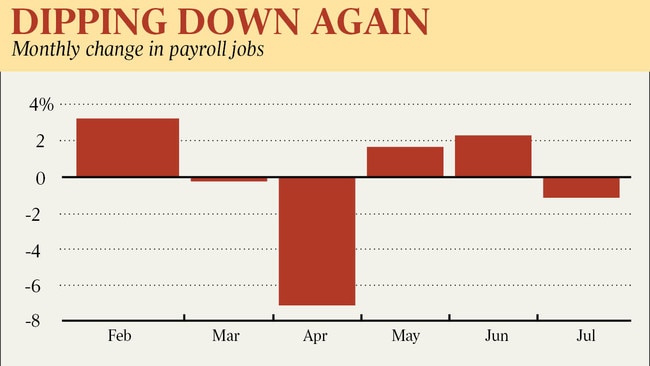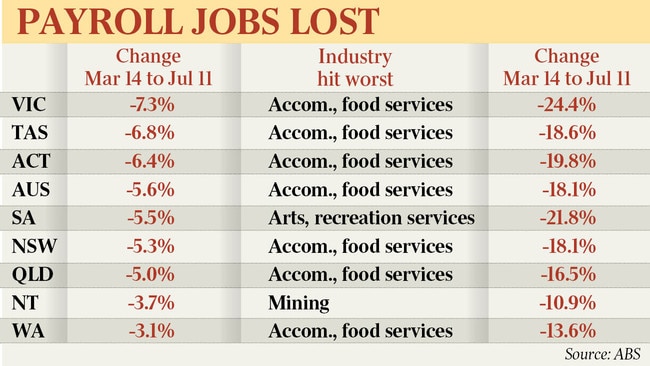Coronavirus Australia: Locked down Victoria bleeding jobs at twice the national rate
Australia’s jobs recovery has gone backwards, with Victoria shedding workers at twice the national rate in July.

Australia’s jobs recovery has gone backwards, with Victoria shedding workers at twice the national rate in July as Melbourne entered lockdown.
The number of Victorian payroll jobs fell by 1.4 per cent over the week to July 11, and by 2.2 per cent over the month, the latest Australian Bureau of Statistics report reveals.
This compared with a 0.6 per cent drop in jobs nationally for the week, and a 1.1 per cent drop over the four weeks.
Victoria had been the slowest to lift social-distancing restrictions even before the second wave of infections, and the data showed that, since the country recorded its 100th COVID-19 case on March 14, there were 7.3 per cent fewer jobs in Victoria by mid-July, against 5.6 fewer for the country as a whole.

Victorian Premier Daniel Andrews issued stay-at-home restrictions for some Melbourne postcodes on July 1 before implementing a citywide and Mitchell Shire six-week lockdown on July 8. Payroll job losses in other states and territories since mid-March ranged from a 6.8 per cent decrease in Tasmania to a 3.1 per cent decrease in Western Australia, the ABS said. Total wages paid through the ATO single-touch payroll system are now 4.8 per cent down from March.
With payroll job numbers falling across most states in recent weeks, ANZ senior economist Catherine Birch said the data was a “worrying sign” for the labour market. It suggested “the strong employment rebound in the June labour force survey is very unlikely to be repeated,” she said.
The latest figures also showed that some sectors which had initially proved resilient began to struggle in late June and early July, with employment in the construction and professional services industries deteriorating to new lows. The ABS uses payroll data from the taxation office’s single-touch payroll system, which covers the vast bulk of the country’s workforce.
The ABS estimates that there were 590,000 fewer payroll jobs on July 11 than on March 14, which represents about a 35 per cent recovery since the depths of the economic hit in mid-April.

The arts and recreation industry showed the greatest lift in payroll jobs over the month to July 11, lifting by 7.5 per cent. But it remains one of the hardest hit segments, down by 16.3 per cent since March. The number of accommodation and food services jobs, which remain 18.1 per cent lower than March, managed to lift by 1.7 per cent over the month to July 11, but fell 0.7 per cent over the week.








To join the conversation, please log in. Don't have an account? Register
Join the conversation, you are commenting as Logout